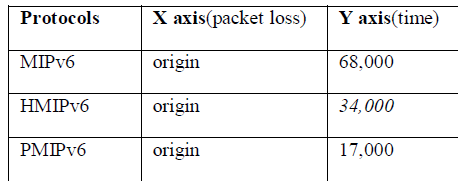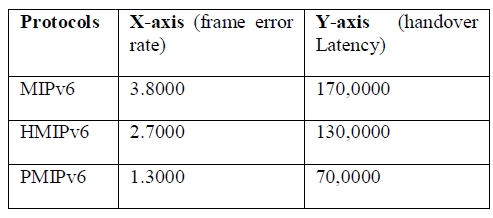ISSN ONLINE(2319-8753)PRINT(2347-6710)
ISSN ONLINE(2319-8753)PRINT(2347-6710)
| J.Anitha2, J.Sathish2, K.Sujatha1 |
| Related article at Pubmed, Scholar Google |
Visit for more related articles at International Journal of Innovative Research in Science, Engineering and Technology
The silkworm larvae were fed on ricinuscommunis leaves treated with 0.5%,1%,1.5%,2%,2.5%,3% concentrations of probiotic Darolac from 3rd instar onwards and its effect on food consumption,utilization and economic traits was studied to understand the efficiency of conversions and its potentials to increase the silk yield in eri silkworm. Ricinuscommunis leaves treated with probiotics recorded maximum food assimilation,assimilation rate food conversion rate at 2% concentration while various economic parameter like weight(7.96gms/10 worms) pupal weight(4.06gms), cocoon weight(4.61)and shell weight (0.57) silk ratio % (12.17) and ERR% (95) also showed increase when compared with control treated batch.The probiotic(darolac) treatment showed the increase in parameters such as growth,development as well as commercial qualities of cocoon at 2% concentration
Keywords |
| Ricinuscommunis,probiotic, eri silkworm, conversion rate, darolac |
INTRODUCTION |
| Qualitative and quantitative increase of silk production would results into better economics in silk industry.In order to maximize silk production,information on nutritional ecology is a requisite for better knowledge of insectsethobiology& physiology[1] |
| Nutritional quality of castor leaves influences ingesta which is related to the physiology of digestion which subsequently influences the growth and development of eri silkworm and its commercial characters. Enrichment of feeds with adequate amount of probiotics confer health benefits to insects by maintaining or improving their intestinal flora. This process is called direct fed microbial method. Nutritional supplements include vitamins, amino acids, protiens and probioticswhen added to larval feed tend to increase nutritional efficiency and economic traits of silkworm[2][3][4]. Probiotics are living, health promoting microorganisms which beneficially effect the host by improving the microbial balance [5].Commonly claimed benefits of probiotics include the decrease of potentially pathogenic gastrointestinal microorganism,strengthening of the immune system and the protection of proteins and lipids from oxidative damage. Different species of lactic acid as probiotics has been extensively tried on mulberry silkworm to improve the commercial characters [6]. As there is no information on the effect of commercial probiotics on eri silkworm, an attempt has been made to find out the effect of Darolac(probiotic) on eri silkworm growth, nutritional efficiency and economic traits |
MATERIAL AND METHODS |
| Test insect |
| The diseased free eggs of eri silkworm were procured from Shadnagar (Hyderabad),Telangana.Eri silkworm was selected for the experimental studies because of their hardness and resistant nature was cultivated under irrigated conditions. Atotal of two rearings were conducted following recommended package of practices [6]. The larvae were reared up to 3rdInstar and worms were treated from 3rd instar till maturity. |
| Darolac („AristoâÃâ¬ÃŸMumbai ) is acommercial probiotic having four strains such as L.acidofilus, L.rhaminosus, B.longum and S.boulardii. Seven different concentrations were made with three replications and 200 larvae per replication in rearing house under controlled (Temp25-26C) and relative humidity (85%) conditions were maintained. |
| The healthy larvae were counted daily in each treatment of three replications and unhealthy /weak larvae if any were replaced by healthy ones of the same age. Feed utilization studies were recorded in late age Eri silkworms which consumed maximum leaves. Aqueous solution of darolac 0.5%.1%,1.5%,2%,2.5% and 3% concentration and control with distilled water were prepared for fortification. The nutritional efficiency and economic traits were recorded and experimental results obtained were evaluated by analysis of variance at 1% and 5% level of significance. |
RESULTS AND DISCUSSIONS |
| The effect of darolacfortified castor leaves fed to erisilkworms on nutritional efficiency and commercial characters are given in Table 1, Table 2 and Table 3. High larval weight 85 gms/10 larvae at 2% concentration was recorded while the amount of ingesta and digesta varied significantly in 4th and 5th instar eri silkworms with different concentrations |
 |
| The amount of ingesta (485.36 gms) and digesta (280.36 gms) was maximum in castor leaves treated with darolac. Gradual increase in nutritional efficiency values was observed from T1 to T4 treatments while from T5 to T6 there was declination in the values whereas in the control the values were comparatively low when compared to other treatments.Increase in ingesta, digesta, approximate digestability,reference ratio, ECI,ECD, RCR and RGR with advancement of age is a well known fact.The higher nutritional efficiency values are necessary as the larvae has to maintain metabolic demand during metamorphosis. Similar results were reported by [7][8] in Eri silkworm. An overall analysis of all seven treatments showed significant changes in nutritional efficiency values in all seven concentrations when compared to that of control batch. The maximum approximate digestability indicate the greater suitability of the feed. In T1-T4 the approximate digestability and rate of assimilation are comparatively more than T5 and T6 treatments, this is due to superior quality and moisture content in the eri silk worm feed which directly influences phagostimulation, digestion and conversion efficiency values significant differences in ECI among the seven concentration batches is also observed and maximum efficiency of conversion of ingested food is an overall measure of utilization ability of ingested food by eri silkworm |
 |
CONCLUSION |
| In conclusion, silkworm diet supplementation with commercial probiotic, darolac at certain levels may be effective to improve growth, development and economic traits. How ever the mechanism of interaction of host native microbiota with commercial probiotic strains on food assimilation physiology and innate immunity of silk worm require further investigation. |
References |
|